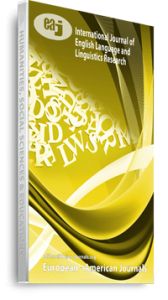As the golden business card, the trademark is quite unique for commodity and closely related to the survival and development of an enterprise. A good trademark not only conveys the basic information of the product but also impresses the consumers and even triggers them to buy the product. As a popular saying in Chinese business circle goes like that “Trademark is soft power”. Trademark translation is a complicated process. Trademark itself has the characteristics of recognition, transmission, aesthetics, adaptability and modernity, so trademark translation is endowed with cultural pragmatic function. This study is theoretically based on the adaptation theory proposed by Jef Verschueren, a famous Belgian linguist and secretary-general of the International Association for Pragmatics. This article discusses the application of adaptation theory in trademark translation. Adaptation theory refers to how a translator can adapt to different cultural and linguistic environments to ensure that the translated trademark name has the same commercial appeal and conveys the same brand image. The article emphasizes the need for translators to understand the cultural and commercial significance of the source language trademark, select an appropriate trademark name that appeals to the target audience, and ensure the trademark is legally and commercially acceptable in the target language environment. Overall, adaptation theory is crucial for ensuring that trademark names are translated effectively across different cultures and languages. With a number of successful examples and failures of existing trademark translations, this study will analyze the cultural differences reflected in the translation of trademarks from the perspective of consumer psychology, customs, aesthetic concepts, religious beliefs and cognitive differences. Several basic trademark translation methods including transliteration, literal translation, combination of transliteration and literal translation, free translation will also be proposed and analyzed. This paper seeks to provide a reference value for seeking more appropriate trademark translations in the future. In addition, through the prediction and analysis of the trend of trademark translation, the author believes that the future direction of trademark translation is diversified, especially from the perspective of the cultural communicative function of trademarks, the emphasis of trademark translation will be on the exploration of cultural transmission and pragmatic function.
Keywords: Cultural Factors, adaptation theory, trademark translation

